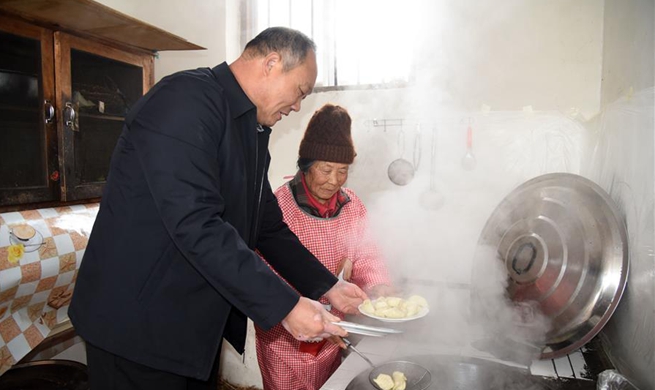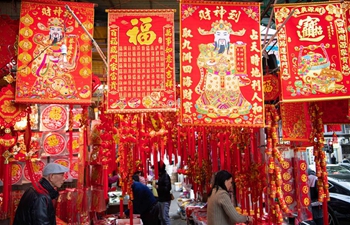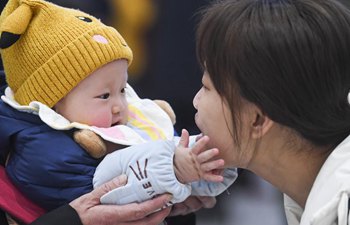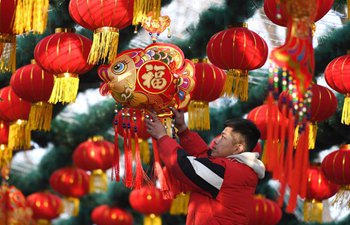TIANJIN, Jan. 25 (Xinhua) -- Wang Di pulled off a thumb-sized piece of white dough, sprinkled a little bit of black-colored pigment into it and kneaded it into the shape of rat's head.
"I will imagine the happy and joyful expression of the rat in my mind, and depict it on the dough until I am satisfied," Wang said.
Born in 1948 in north China's Tianjin Municipality, Wang is an inheritor of the intangible cultural heritage of dough figurine making.
Making dough figurines for 40 years, she has created her third set of work related to the Year of the Rat.
Chinese Lunar New Year, or the Spring Festival, falls on Jan. 25 this year. The lunar calendar has a 12-year cycle, with each year assigned an animal symbol: rat, ox, tiger, rabbit, dragon, snake, horse, sheep, monkey, rooster, dog and pig.
Rat is the first among the 12 animals of the ancient Chinese zodiac. In Chinese culture, they are a symbol of intelligence, fertility, affluence and agility.
"I changed the abominable image of rats to positive, optimistic and leisurely ones," she said.
Before making a dough figurine, she needs to prepare a certain percentage of wheat flour, glutinous rice flour, vaseline and preservatives and mix them together in a container, slowly add some water and then steam the dough for about 20 to 25 minutes. The dough would be elastic after cooling down.
The process of making dough figurines is not difficult, but to convey the sense of jubilation and vitality from figurines' expressions takes effort, according to Wang.
She looked for inspirations from Chinese classical legends, myths and famous books before creating the work named "dream."
In the work, a girl rests on a chair and dreams of a traditional story of a mouse wedding procession. A total of 15 rats strode in line. Some of them played the instruments of sheng, flute, suona horn and drum and some held small flags.
Dough figurine making can be traced back to the Han Dynasty (202 B.C.-220 A.D.)
People first made dough food shaped like butterflies and lotus flowers to celebrate traditional festivals. As time went on, it has become a traditional handicraft art.
Wang used dozens of crafting tools with varying functions. "Scissors are used to cut figurine's hands, sharp tools for making cloth folds and tweezers for clamping small objects."
Wang has made a name for herself. She has visited over 20 countries and regions including Germany, Denmark, Sweden, the United States and Singapore to spread Chinese traditional dough figurine art.
"It's a pursuit of beauty and goodness. Being able to learn, inherit and spread this art, I feel honored and proud," she said.

















